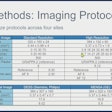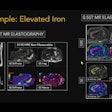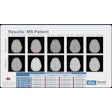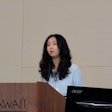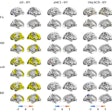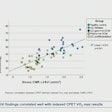HONOLULU - Breast MRI is the most sensitive test for breast cancer detection, and it's the most accurate modality for staging and monitoring treatment of the disease, according to a May 10 AuntMinnie video interview with Katja Pinker, MD, PhD, at the International Society for Magnetic Resonance in Medicine (ISMRM) meeting.
AuntMinnie's talk with Pinker followed a "state-of-the-modality" presentation she delivered at the conference. Pinker is division chief of breast imaging in the department of radiology at Columbia University Medical Center in New York City.
She outlined breast MRI's range of iterations:
Dynamic contrast-enhanced MRI (DCE-MRI). This technique is the "backbone" of any breast MRI protocol, as it offers the highest range of sensitivity, from 89% to 100%, Pinker explained. DCE-MRI protocols have a range, she noted:
- Fast DCE-MRI: Temporal resolution of 60 to 90 seconds, and spatial resolution of 1 mm in-plane
- Faster DCE-MRI: Simultaneous high temporal and spatial resolution, and 10 to 15 seconds ≤ 1 mm in-plane
- Ultra-fast DCE-MRI: Initial ultra-fast scan of three to four seconds with lower resolution, followed by high spatial resolution sequence (≤ 1 mm in-plane)
"In women undergoing breast cancer screening with DCE-MRI and high BPE [background parenchymal enhancement], a high temporal/spatial resolution (HTHS) MRI protocol significantly improves diagnostic performance," Pinker said, noting that this protocol shows an additional cancer yield of 19.6 cancers per 1,000 compared to standard DCE-MRI -- while also reducing unnecessary biopsies.
Abbreviated MRI. Pinker cited a study that found that an abbreviated MRI protocol produced an additional cancer yield of 18.2 per 1,000 scans compared with a conventional protocol, with equivalent sensitivity and specificity. She also highlighted a study that showed that an abbreviated MRI breast cancer screening protocol for women at high-risk that included a T2-weighted sequence showed comparable sensitivity, positive predictive value, negative predictive value, and area under the curve value to that of a full breast MRI protocol.
"Abbreviated MRI plus T2 is a feasible alternative to a full breast MRI protocol for breast cancer screening in [high-risk] BRCA-positive patients," she said.
Diffusion-weighted imaging with apparent diffusion coefficient (ADC) mapping. This technique is fast (under 3 minutes) and doesn't require contrast, Pinker said. It helps distinguish between benign and malignant lesions in the diagnostic setting, and show promise in identifying cancer not seen on mammography.
Multiparametric MRI with DCE and DWI. The combination of DCE and DWI offers better diagnostic accuracy than DCE or DWI alone, Pinker noted, citing a study that found this combination produced an AUC of 0.94 compared to 0.85 for DCE-MRI alone.
Pinker's takeaway? The use of breast MRI is bound to increase as the pool of women who would benefit from it expands, she said.
"Breast MRI is recommended for high-risk screening, and tentatively recommended for women at greater than average risk of breast cancer -- [which will likely] increase the breast MRI screening population," she concluded.
Check out AuntMinnie.com’s full coverage of ISMRM 2025 here.

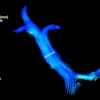
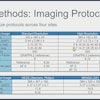
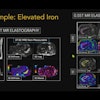


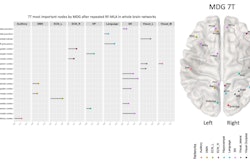

![Regions of interest depicted in colors: cerebrospinal fluid (blue), cortical gray matter (dark green), and white matter (yellow). Scatter plots present significant correlations between (b) [semi-solid spin pool size, or ms0m0s] entropy and age in cerebrospinal fluid and cortical gray matter, and (c) [longitudinal relaxation rates, or Rf1R1f] entropy and age in cortical gray matter and white matter (p < 0.05). Images, graphics, and caption courtesy of Sohae Chung, PhD, and the ISMRM.](https://img.auntminnie.com/mindful/smg/workspaces/default/uploads/2025/05/2025-05-09-novel-mri-technique-image.tmqDtL6pTg.png?auto=format%2Ccompress&fit=crop&h=167&q=70&w=250)

